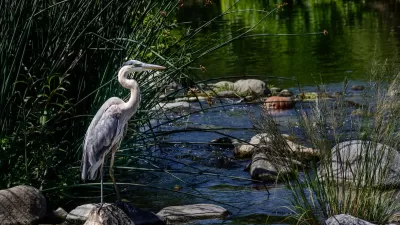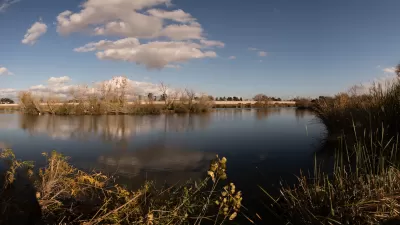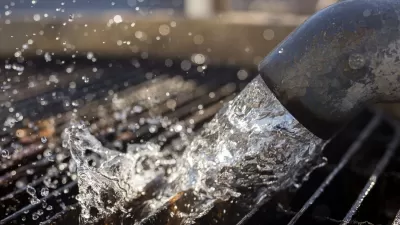In this travelogue, Dwell tours the often-overlooked infrastructure that keeps the metropolis of Los Angeles running.
"Los Angeles is a polarizing city. To some it is a paradise of beautiful beaches, buxom bodies, Beverly Hills, and the world's most pimped-out cars-–a place where you, too, could be discovered, your name in lights, your star forever embedded in the Walk of Fame. To others, it is a glimpse of the apocalypse, one of the forecourts of hell, with its race riots, air pollution, earthquakes, wildfires, and overwhelming extremes of stupidity. Los Angeles is the kind of place some people refuse even to visit."
"Let's put that argument aside and look instead at L.A.'s edges-–not its countercultural hot spots, but the post-industrial voids and internal peripheries that let the city function. For instance, where does L.A. get its water? What about electricity? What about all the sand, gravel, and concrete that went into those thous-ands of freeways, parking lots, and roads? How does such a chaotic and sprawling city actually work? And where does all its trash go?"
"'In order to understand the bigger picture of Los Angeles,' explains Coolidge, 'you have to understand how the city flows in and out of its regional landscape. These are the places that run the city; they're the places that make L.A. what it is. They're places we've constructed so that other, perhaps more minor, activities can occur here. Once you understand how they operate-–how they form a system, how they consort and are connected-–these places do have a beauty to them.'"
FULL STORY: Los Angeles

Alabama: Trump Terminates Settlements for Black Communities Harmed By Raw Sewage
Trump deemed the landmark civil rights agreement “illegal DEI and environmental justice policy.”

Planetizen Federal Action Tracker
A weekly monitor of how Trump’s orders and actions are impacting planners and planning in America.

Why Should We Subsidize Public Transportation?
Many public transit agencies face financial stress due to rising costs, declining fare revenue, and declining subsidies. Transit advocates must provide a strong business case for increasing public transit funding.

Understanding Road Diets
An explainer from Momentum highlights the advantages of reducing vehicle lanes in favor of more bike, transit, and pedestrian infrastructure.

New California Law Regulates Warehouse Pollution
A new law tightens building and emissions regulations for large distribution warehouses to mitigate air pollution and traffic in surrounding communities.

Phoenix Announces Opening Date for Light Rail Extension
The South Central extension will connect South Phoenix to downtown and other major hubs starting on June 7.
Urban Design for Planners 1: Software Tools
This six-course series explores essential urban design concepts using open source software and equips planners with the tools they need to participate fully in the urban design process.
Planning for Universal Design
Learn the tools for implementing Universal Design in planning regulations.
Caltrans
Smith Gee Studio
Institute for Housing and Urban Development Studies (IHS)
City of Grandview
Harvard GSD Executive Education
Toledo-Lucas County Plan Commissions
Salt Lake City
NYU Wagner Graduate School of Public Service





























